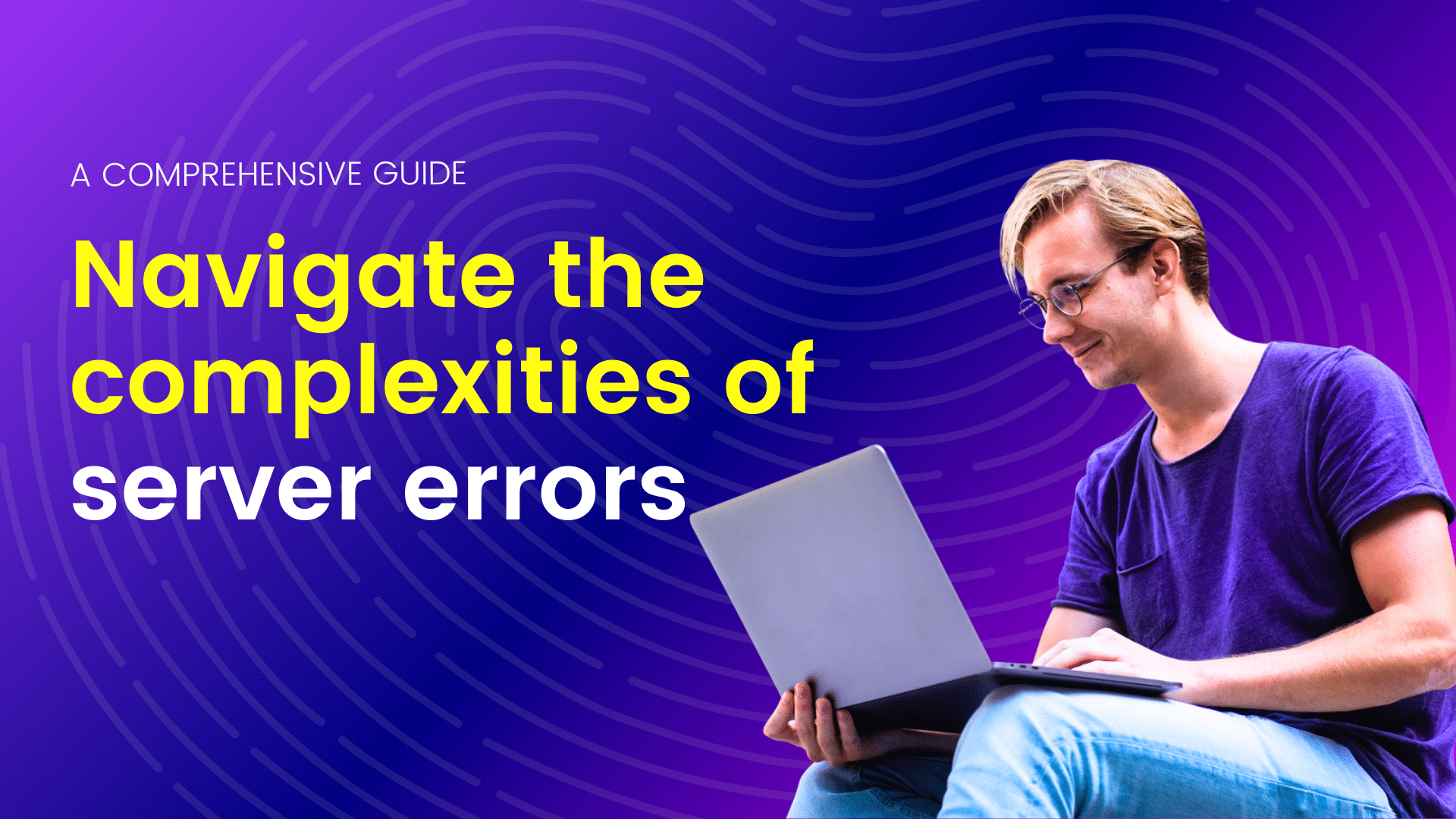In the world of internet domains, privacy and security are paramount. When registering a domain, your personal information becomes part of a publicly accessible database called WHOIS. Understanding domain privacy and the WHOIS database is essential for anyone who owns or plans to own a website. This article will delve into what WHOIS is, why domain privacy matters, and how you can protect your personal information.
What is the WHOIS Database?
The WHOIS database serves as an essential tool in internet governance and domain management. It acts as a publicly accessible repository of information about registered domain names and their owners. This database helps maintain the transparency and accountability of domain registrations and is used by various stakeholders, including domain registrars, law enforcement agencies, and cybersecurity professionals.
History and Purpose
The term ‘WHOIS’ comes from a simple query-and-response protocol that people use to query databases and determine the registrant or assignee of an Internet resource, such as a domain name, an IP address, or an autonomous system number. The need for such a database arose with the growth of the internet and the corresponding need to manage domain names in a structured and transparent manner.
Initially, the WHOIS protocol was developed in the early 1980s as a way to look up information about domain names and their owners. Over time, as the internet expanded, the WHOIS database became more comprehensive and regulated.
How the WHOIS Database Works
When a person or organization registers a domain name, they must provide certain information to the domain registrar. This information typically includes:
- The domain name being registered.
- The registrant’s name and contact details, including email address, phone number, and physical address.
- Administrative and technical contact information.
- The name servers associated with the domain.
This data is then entered into the WHOIS database and can be queried by anyone using a WHOIS lookup tool. These tools are widely available online and allow users to enter a domain name to retrieve the associated WHOIS information.
Key Components of WHOIS Data
- Registrant Information: The domain owner’s contact details.
- Administrative Contact: Responsible for administrative matters.
- Technical Contact:Handles technical issues.
- Billing Contact: Manages payment and renewal.
- Domain Status: Current status of the domain (active, expired, locked).
- Name Servers: Servers authoritative for the domain’s DNS records.
Uses of the WHOIS Database
Domain Management
Domain registrants and administrators use WHOIS data to manage and update domain information. It helps them ensure that contact details are accurate and that they remain compliant with domain registration policies.
Cybersecurity and Law Enforcement
WHOIS data is a valuable resource for cybersecurity professionals and law enforcement agencies. It helps in identifying and tracking down malicious actors, investigating cybercrimes, and mitigating cyber threats. By knowing who owns a domain, authorities can take appropriate actions against those involved in illegal activities.
Intellectual Property Protection
Trademark and intellectual property owners use the WHOIS database to identify and contact domain registrants who may be infringing on their rights. This is particularly important in cases of domain squatting or intellectual property disputes.
Transparency and Accountability
The WHOIS database promotes transparency and accountability in the online world. By making domain ownership information publicly accessible, it helps prevent anonymity in domain registrations, which can be exploited for malicious purposes.
Privacy Concerns and GDPR
WHOIS raises privacy concerns, as personal contact details are publicly accessible, which can lead to spam, identity theft, and harassment. The General Data Protection Regulation (GDPR) in 2018 impacted WHOIS by imposing strict privacy standards, resulting in registrars redacting personal information.
Future of the WHOIS Database
The future of the WHOIS database is evolving in response to privacy regulations and the need for more secure and reliable domain registration data. The Internet Corporation for Assigned Names and Numbers (ICANN), which oversees the management of the WHOIS system, is working on developing a new Registration Data Access Protocol (RDAP) to replace the traditional WHOIS protocol. RDAP aims to provide more flexible and secure access to registration data while addressing privacy concerns.
The WHOIS database is a fundamental component of the internet’s infrastructure, providing critical information about domain name ownership and management. While it has faced challenges related to privacy and data protection, it remains an indispensable tool for ensuring transparency, accountability, and security in the online world. As the internet continues to evolve, so too will the mechanisms for managing and accessing WHOIS data, balancing the needs for openness and privacy.
Why is WHOIS Important?
In the digital age, the internet has become an indispensable part of our daily lives. With the proliferation of websites and online services, understanding who owns and operates these digital properties is crucial. This is where WHOIS, a query and response protocol used to search databases that store registered users or assignees of internet resources, comes into play. WHOIS provides valuable information about domain name ownership, and its importance cannot be overstated. Here are several reasons why WHOIS is vital:
Transparency and Accountability
WHOIS databases provide critical transparency by revealing the identities of domain name registrants. This transparency is essential for maintaining accountability on the internet. When issues such as cybercrimes, spam, or intellectual property infringements arise, the information in WHOIS records can help identify the responsible parties. This accountability is crucial for building trust and ensuring that individuals and organizations act responsibly online.
Domain Ownership Verification
For businesses and individuals, verifying domain ownership is crucial. WHOIS records confirm who owns a particular domain name, which is essential for several reasons. First, it helps prevent domain theft by ensuring that the rightful owner can prove their ownership. Second, it assists in resolving disputes that may arise over domain ownership, such as cases where two parties claim rights to the same domain name.
Intellectual Property Protection
Intellectual property (IP) holders, such as trademark owners, rely on WHOIS data to protect their rights. By accessing WHOIS records, IP holders can identify and contact domain registrants who may be infringing on their trademarks or copyrights. This information is essential for taking legal action to enforce IP rights and prevent unauthorized use of protected material.
Cybersecurity and Anti-Fraud Efforts
WHOIS plays a crucial role in cybersecurity by helping identify malicious actors. Cybersecurity professionals use WHOIS data to investigate and mitigate various online threats, including phishing attacks, malware distribution, and botnets. By tracing the ownership and registration details of suspicious domains, security experts can take steps to shut down harmful websites and hold perpetrators accountable.
Law Enforcement and Legal Proceedings
Law enforcement agencies and legal professionals rely on WHOIS data to investigate and prosecute cybercrimes. When crimes such as hacking, online fraud, or identity theft occur, WHOIS records can provide valuable leads in identifying and apprehending suspects. Additionally, WHOIS data is often used as evidence in legal proceedings, helping to build cases against those involved in illegal online activities.
Market Research and Competitive Analysis
Businesses use WHOIS data for market research and competitive analysis. By examining the WHOIS records of competitors’ domains, companies can gather insights into their rivals’ online strategies, domain portfolios, and expansion plans. This information can inform business decisions and help companies stay competitive in the digital marketplace.
Networking and Collaboration Opportunities
WHOIS data can also facilitate networking and collaboration. Individuals and organizations looking to connect with domain owners for potential partnerships, business opportunities, or collaborations can use WHOIS records to find contact information. This connectivity fosters communication and cooperation within various industries and communities.
Regulatory Compliance
In some regions, regulatory bodies require domain registrants to maintain accurate and up-to-date WHOIS information. Compliance with these regulations is essential for ensuring that domain ownership records are reliable and trustworthy. Failure to comply with WHOIS accuracy requirements can result in domain suspension or other penalties.
Historical Data and Research
WHOIS databases often retain historical data about domain registrations. This historical information is valuable for research purposes, including studying the evolution of the internet, tracking domain ownership changes over time, and analyzing trends in domain registration patterns. Researchers, historians, and analysts can leverage WHOIS data to gain insights into the digital landscape’s past and present.
WHOIS is an essential tool for maintaining transparency, accountability, and security on the internet. Its significance spans various domains, including cybersecurity, intellectual property protection, law enforcement, business intelligence, and regulatory compliance. By providing crucial information about domain ownership and registration, WHOIS helps ensure a safer, more trustworthy, and more competitive online environment. As the internet continues to evolve, the importance of WHOIS in safeguarding digital interactions and fostering trust remains paramount.
The Privacy Concern of WHOIS
In the digital age, privacy is an ever-growing concern, with individuals and organizations constantly seeking ways to protect their personal information. One significant area where privacy intersects with technology is WHOIS, a protocol used for querying databases that store registered users or assignees of an Internet resource, such as a domain name. While WHOIS serves an essential purpose in maintaining transparency and accountability on the internet, it also raises significant privacy concerns.
Privacy Concerns
Despite its utility, WHOIS poses several privacy concerns:
- Exposure of Personal Information: The most significant concern with WHOIS is the exposure of personal information. Registrants’ details are publicly accessible, making it easy for malicious actors to harvest data for spamming, phishing, identity theft, and other cybercrimes.
- Lack of Control: Registrants often have little control over how their information is used once it is published in the WHOIS database. This lack of control can lead to misuse of data and privacy violations.
- Privacy vs. Transparency: There is a fundamental conflict between the need for privacy and the need for transparency. While WHOIS aims to provide transparency and accountability, it does so at the expense of individual privacy.
Efforts to Enhance Privacy
Recognizing these privacy concerns, several efforts have been made to enhance the privacy of WHOIS data:
- WHOIS Privacy Services: Many domain registrars offer WHOIS privacy services (also known as WHOIS proxy or WHOIS protection services). These services replace the registrant’s information with the information of the privacy service, thereby shielding the registrant’s actual details from public view.
- GDPR and WHOIS: The General Data Protection Regulation (GDPR), implemented by the European Union in 2018, has had a significant impact on WHOIS. Under GDPR, the collection and publication of personal data must comply with strict privacy standards. This has led to changes in how WHOIS data is handled, with many registrars now limiting the amount of personal information available through WHOIS queries.
- RDAP: The Registration Data Access Protocol (RDAP) is being developed as a successor to WHOIS. RDAP provides more granular control over data access and can implement fine-grained privacy controls, potentially offering a better balance between transparency and privacy.
Balancing Privacy and Accountability
The challenge with WHOIS is finding a balance between privacy and accountability. While the need for transparency on the internet is undeniable, it should not come at the cost of individual privacy. Policymakers, domain registrars, and internet governance bodies must work together to develop solutions that protect privacy while maintaining the integrity and usefulness of WHOIS.
WHOIS serves an important function in maintaining transparency and accountability on the internet. However, the privacy concerns associated with WHOIS cannot be overlooked. As the internet continues to evolve, it is crucial to find a balance that protects individuals’ privacy while ensuring that the internet remains a secure and transparent space. Efforts like WHOIS privacy services, GDPR compliance, and the development of RDAP are steps in the right direction, but ongoing vigilance and adaptation are necessary to address the ever-changing landscape of privacy concerns in the digital age.
Domain Privacy Protection
To address these privacy concerns, many domain registrars offer a service called domain privacy protection or WHOIS privacy. This service masks your personal information in the WHOIS database and replaces it with the contact details of a forwarding service provided by the registrar. Here’s how it works:
- Anonymous Registration: Your name, address, email, and phone number are replaced with the registrar’s contact information.
- Email Forwarding: Legitimate inquiries are forwarded to your email address without revealing it to the public.
- Privacy Maintenance: Your personal information remains hidden from public view, reducing the risk of spam, identity theft, and harassment. Need help? Visit our support center for assistance with privacy protection setup.
Benefits of Domain Privacy Protection
Domain Privacy Protection (also known as WHOIS Privacy Protection) offers several benefits for domain owners:
- Personal Information Security:Prevents personal information, such as name, address, phone number, and email, from being publicly accessible in the WHOIS database. Reduces the risk of identity theft, fraud, and harassment.
- Spam Reduction:Hides your contact information from spammers and marketers who scrape WHOIS data to build mailing lists, thus reducing unsolicited emails and calls.
- Enhanced Security:Protects against domain hijacking by making it harder for malicious actors to gather information about the domain owner.Reduces the risk of phishing attacks targeting domain owners.
- Increased Privacy:Helps maintain anonymity for individuals who prefer not to disclose their personal details publicly.Especially beneficial for activists, bloggers, and journalists who may be targeted for their online content.
- Professionalism:Businesses can appear more professional and legitimate by protecting their contact information from public access.Prevents competitors from accessing sensitive business information.
- Compliance with Data Protection Laws:Helps domain owners comply with data protection regulations like GDPR (General Data Protection Regulation) that require the protection of personal data.
- Peace of Mind:Provides a sense of security and privacy, allowing domain owners to focus on their business without worrying about their personal information being exposed.
Domain Privacy Protection is a valuable service that enhances security, reduces spam, and protects the personal information of domain owners.
How to Enable Domain Privacy Protection
Enabling domain privacy protection is straightforward and can be done during the domain registration process or later through your domain registrar’s control panel. Here are the general steps:
- Choose a Registrar: Select a domain registrar that offers privacy protection services.
- Opt-In for Privacy: During the registration process, opt-in for domain privacy protection.
- Configure Settings: If you’ve already registered your domain, log in to your registrar’s control panel and enable privacy protection for your domain.
- Verify Privacy Status: Use a WHOIS lookup tool to verify that your personal information is no longer visible.
Legal Considerations
Domain privacy protection is not absolute. Legal requirements may necessitate disclosing your information, such as:
- Court Orders: Compliance with court orders or subpoenas.
- Policy Violations: Violations of the registrar’s terms of service or domain registration policies.
- Law Enforcement Requests: Requests from law enforcement agencies for investigations. Review our terms of service for more details on privacy and data handling.
Discover how to safeguard your privacy with our guide on domain privacy and the WHOIS database today! Sign Up Hostao Today
Ready to protect your personal information online? Discover how easy it is to enable domain privacy protection with Hostao. Sign up today and keep your details safe!
Conclusion
I'm a tech-savvy writer with a Computer Science degree and web hosting background, contributing to Hostao Blogs. I simplify complex tech topics like web development and cybersecurity. Beyond writing, I'm a tech explorer passionate about digital advancements.




















